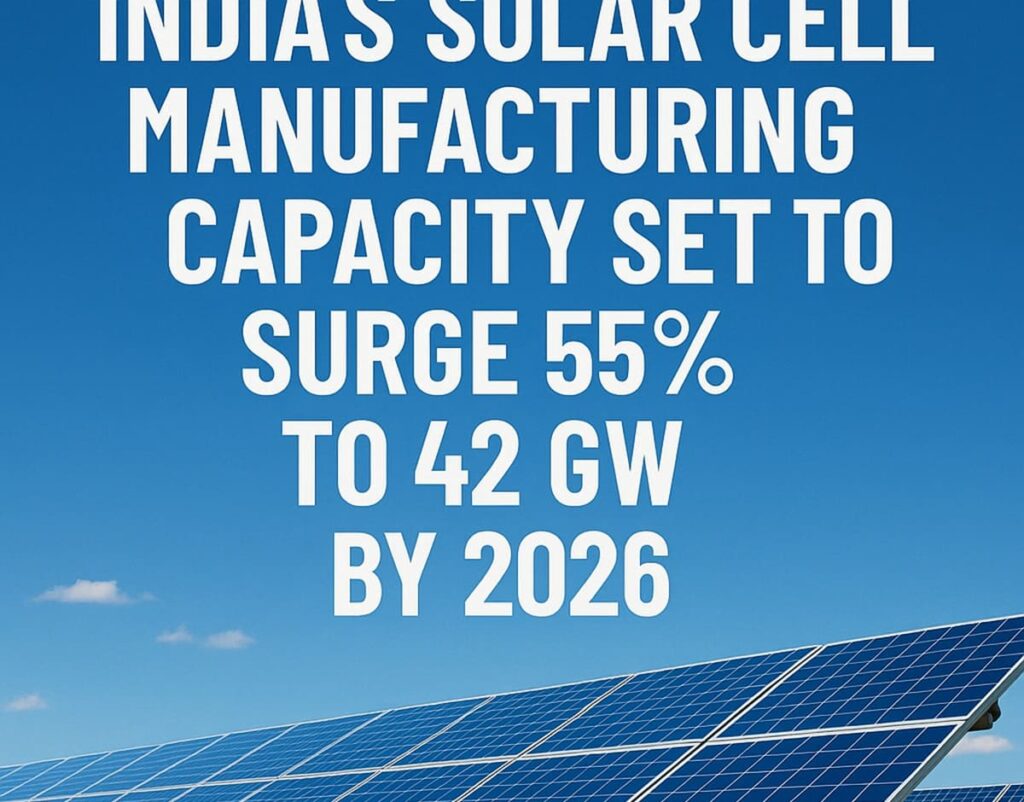ALMM List for Solar Cells Imminent as Government Streamlines Domestic Manufacturing Push.
New Delhi, India – India’s solar cell manufacturing capacity is poised for rapid expansion, projected to grow from 27 GW today to 42 GW by June 2026, according to government officials. This 55% increase comes as the Ministry of New and Renewable Energy (MNRE) prepares to release the Approved List of Models and Manufacturers (ALMM) for solar cells within days – a key policy move to strengthen domestic manufacturing under the Atmanirbhar Bharat initiative.
Key Developments in India’s Solar Manufacturing Ecosystem
1. Capacity Expansion Timeline
| Year | Solar Cell Capacity | Growth | Top Players |
|---|---|---|---|
| 2024 | 27 GW | – | Waaree, Adani, Tata Power, Premier, ReNew, Gensol |
| 2026 | 42 GW (projected) | +55% | New entrants expected |
2. Policy Updates: ALMM for Solar Cells
✔ Mandatory from June 2026 for new projects
✔ Exemption granted for ongoing bids (using ALMM List-I modules) until 1 month after ALMM cell list notification
✔ Future expansion: ALMM for wafers & polysilicon in 2-3 years (currently only 2.2 GW wafer capacity)
3. Export & Import Dynamics
- Export shift: Focus on US & West Asia as EU demand slows
- China dependency: Module price gap narrows (42¢ → 7-8¢ vs. Indian DCR modules)
- Anti-dumping probe: US investigation unlikely to majorly impact Indian exports
Why This Growth Matters?
✅ Reducing Import Reliance
- Cuts dependence on Chinese wafers & polysilicon (currently 90%+ imported)
- Strengthens full supply chain (polysilicon → wafer → cell → module)
✅ Boosting “Make in India” Solar
- ALMM ensures domestic procurement for govt projects
- PLI scheme (₹24,000 cr) already driving manufacturing investments
✅ Global Competitiveness
- Economies of scale to reduce costs (currently higher conversion costs)
- Potential to capture US/West Asia markets amid China+1 trends
Industry Reactions
Government Official:
*”With 42 GW cell capacity by 2026, India will be self-sufficient for most utility-scale projects. The ALMM provides certainty to manufacturers.”*
Solar Manufacturer (Waaree/Adani):
“We’re scaling up to meet demand. The next challenge is backward integration into wafers and polysilicon.”
Project Developer:
“ALMM provides clarity. The transition period ensures no disruption to ongoing bids.”
What’s Next?
🔹 ALMM cell list notification (expected within days)
🔹 New wafer/polysilicon plants (2-3 year horizon)
🔹 Export push to US amid anti-China sentiment
Conclusion:
India’s solar manufacturing ecosystem is entering a transformative phase, with cell production set to grow 55% in 2 years. While module manufacturing has gained momentum, the real test will be developing wafer and polysilicon capacities to achieve true supply chain independence.
Key Challenge Ahead:
⚡ Scaling wafer/polysilicon production to reduce China dependence
